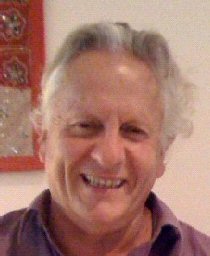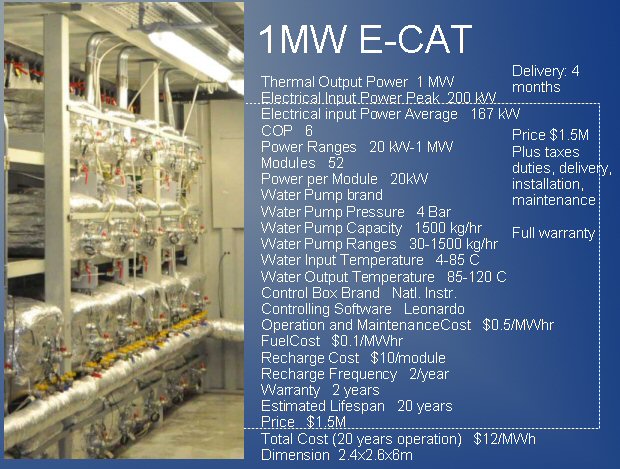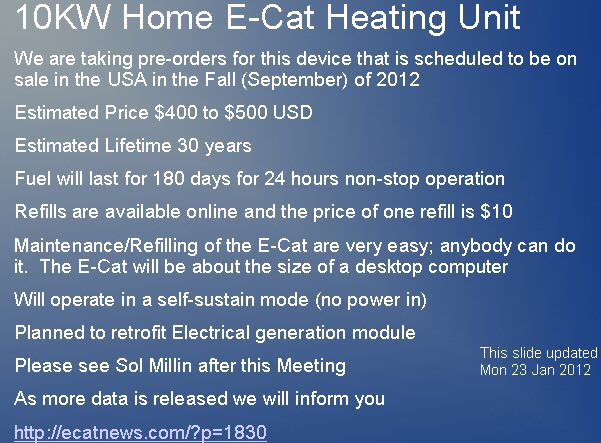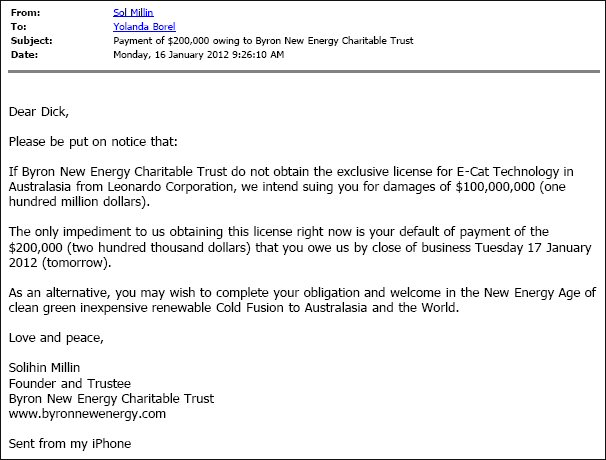Rossi’s Australian Investment Opportunity Falls Through
An Australian believer in Andrea Rossi’s “Energy Catalyzer” has failed to obtained money to acquire the Australian rights to Rossi’s device.

Solihin Millin
Solihin Millin, from Murwillumbah, Byron Bay, Australia, asked potential investors for money to acquire the Australian rights to Rossi’s device. One of the potential investors was Dick Smith, a successful Australian businessman and philanthropist. Millin asked him for AUS$200,000.
Smith had some doubts so he asked the Australian Skeptics Society to look into the merits of Rossi’s device. They had doubts, too, and warned Smith, who decided to pass on the opportunity.
Millin, in turn, threatened to sue Smith for damages of AUS$100 million because, according to Millin, he lost the time-sensitive opportunity to acquire the Australian E-Cat rights.
Millin runs an organization in Australia called Byron New Energy Charitable Trust, also known as the Byron New Energy Group. New Energy Times spoke with Millin on Feb. 1, but he declined to comment.
“The group has a goal of love and selfless service to humanity at large,” the group’s Web site said, “of researching, developing, publishing freely in the public domain for the good of humanity at large, and manufacturing devices that use clean renewable energy sources that supply viable alternatives to those devices that use non-environmentally friendly non-renewable fuels such as nuclear and fossil fuels. These devices will also help eliminate poverty and hardship around the world and bring prosperity and happiness to our wonderful human family.”
But the Byron New Energy Group just needed some money. So on Dec. 7, 2011, Millin asked Smith for AUS$200,000 to acquire the Australasian E-Cat license.
“Cold fusion is now a commercial reality,” Millin wrote, “and will replace dirty fossil fuel, coal, oil and gas AND deadly Uranium as the World’s new Clean Green Power. This is a highly lucrative trillion-dollar market opportunity. Byron New Energy Charitable Trust is set to acquire the exclusive Australasian E-Cat Cold Fusion License from Andrea Rossi in Italy.
“Rossi’s cold fusion is a commercial reality with 14 one-megawatt plants already sold in the USA and Europe to groups such as NASA and DARPA and commercial companies. We have been negotiating with Andrea Rossi for many months, and the contracts have been agreed, and I am scheduled to fly to Bologna, Italy, to sign the agreement and pay the license fee. We need the $200K risk capital to enable this.”
On or about Dec. 8, 2011, Millin sent Smith another e-mail, along with the NASA slide presentations he obtained from the New Energy Times Web site.
“Here is independent evidence from three of NASA’s senior scientists that Andrea Rossi’s E-Cat technology is real,” Millin wrote. “In fact, to the best of my understanding, one of the first sales that has already been made of the one-megawatt E-Cat is to NASA.”
Millin was mostly incorrect. As New Energy Times reported on Feb. 10, NASA did not buy and never had any intention of buying a device from Rossi. Of the three NASA presentations that Millin sent to Smith, only that of Dennis Bushnell, the chief scientist at NASA Langley, implied that Rossi’s claim was real.
Michael A. Nelson, an engineer at NASA Marshall who investigates low-energy nuclear reactions and space applications, has been more circumspect. In his Sept. 22, 2011, presentation, Nelson publicly identified the key technical concerns about the Rossi device.
On July 14, 2011, Nelson met Rossi when he came to NASA Marshall to ask them to test and evaluate his device. Marshall accepted Rossi’s offer. The two parties began negotiating details of the test protocol. NASA asked for a test that avoided phase change of water into steam because steam would introduce unnecessary confusion to the test. A few days later, Rossi withdrew his offer.
In Millin’s December e-mail, he explained his intentions further to Smith.
“All we need is $200K initial risk capital from yourself to secure the Australasian exclusive license,” Millin said. “Dear Andrea Rossi is waiting for Byron New Energy to obtain the funding. We have built up a very good relationship with dear Andrea, and I believe he likes BNE’s honesty and humanitarian values, as well as our commercially oriented market strategy.
“There is plenty of money for everyone. This is an opportunity not only to make large amounts of money but also to be part of the introduction of new clean green technology for our beautiful planet and our peoples and to alleviate poverty. Love and peace, Solihin Millin.”
On Dec. 12, 2011, Smith sent an e-mail to Tim Mendham, the executive officer and editor for the Australian Skeptics society.
“I recently received the following email from Solihin Millin,” Smith wrote. “He wants a mere $200,000 from me for the Byron New Energy Charitable Trust to invest in cold fusion. Normally, of course, I would just write out my cheque for $200,000 and send it off. However, I thought there was just the slightest chance that it’s a con or someone is being deluded. Do you know anything about them?”
Mendham contacted Ian Bryce, an aerospace engineer and member of the society who has extensive experience in testing unusual physics-engineering devices. Mendham asked Bryce to look into the matter.
During the next 30 days, Bryce studied the available information and found serious problems, according to an e-mail he sent to New Energy Times.
“By Jan. 8, I set down my tentative observations and conclusions about Rossi’s E-Cat. I reported to Smith that many scientists and observers had given varying degrees of support to Rossi’s E-Cat because the measurements showed large power gains,” Bryce wrote. “I could not explain this. However, there were too many bad signs for it to be real.”
Millin had been impressed by the confidence placed in Rossi’s device by two Swedish professors: Sven Kullander, professor emeritus at Uppsala University, and Hanno Essén, associate professor of theoretical physics and a lecturer at the Swedish Royal Institute of Technology and the former chairman of the Swedish Skeptics Association.
Kullander and Essén endorsed Rossi’s extraordinary excess-heat claim in a news story on Feb. 23, 2011, before they had inspected or seen Rossi’s device.
On March 29, 2011, after they told the public it must embrace the Rossi claim, they went to Bologna, Italy, expenses paid by Rossi, to see a demonstration of Rossi’s device and inspect it. They wrote up their report on April 3, 2011.
“Any chemical process for producing 25 kWh from any fuel in a 50 cm^3 container can be ruled out,” the professors wrote. “The only alternative explanation is that there is some kind of a nuclear process that gives rise to the measured energy production.”
Unfortunately, the professors didn’t think about how Rossi could be flushing water down the hole in the wall rather than turning it into steam. The professors never thought to ask the obvious disturbing question, “Hey, where’s the huge steam output?”
“Since there was no other path for the water than straight through the device in a single hose-pipe-hose track, we concluded that all the water must become steam,” Essén wrote. “The steam was checked by observation and appeared to be consistent with the water flow (order-of-magnitude-wise).”
As New Energy Times reported six months ago, when liquid water turns into vaporized water (steam), it expands volumetrically 1,600 times. And when the professors saw tiny puffs of steam instead, they didn’t think about the fact that it should have been coming out at 1,600 times the volume of the water going in.
New Energy Times spoke with Essén on July 15, 2011 and asked him whether, when he pulled the hose out of the wall and saw the steam, he thought about the expansion rate.
“No, I must admit, I was thinking that I must check that the water is not draining out,” Essén said. “I had this vague feeling that the water inlet flow wasn’t that fast, that the steam could be consistent with it, especially after some condensation in the hose. But we should have looked more into that, obviously, but there was not enough time.”
When Rossi told them he hired an expert to measure the steam, the professors never imagined that Rossi’s expert had used a device that was not designed to measure steam. But, anyway, that’s not Millin’s fault.
On Dec. 22, 2011, Millin sent the Kullander and Essén report to Smith, but Smith wasn’t convinced.
On Jan. 13, 2012, Millin held an investors’ meeting and began asking people for money for Rossi E-Cats. Smith asked Bryce to go to the meeting and give a presentation. According to Bryce, about 70 people attended.
Here are slides #4 and #6 from Millin’s presentation:

According to Millin, Rossi had arranged to attend the meeting over Skype, but Rossi failed to appear. As we went to press, Rossi had not denied any association with Millin. Here is a copy of Millin’s slide presentation.
Millin's Invitation to the E-Cat Investors' Meeting
“On this historic day, Friday, [Jan.] 13, 2012, the availability of Cold Fusion is announced to Australasia,” Millin said. “The Advent of Clean Green Renewable Inexpensive Energy as a replacement for Fossil Fuel, Oil, Gas, Fracking and URANIUM is here NOW. From this time, orders can be placed for Industrial and Commercial 1MW heating Units. Please see Sol Millin after this Meeting.”
The story about the investment meeting ran on Jan. 13 in the Sydney Morning Herald; an E-Cat Web site written by a ghostwriter plagiarized a lot of the Herald story and ran a similar story.
Bryce wasn’t convinced about the E-Cat, as he told New Energy Times.
“Nothing I learned at the meeting changed the doubts I had developed,” Bryce wrote. “The next morning, I reported to Smith and said there were too many bad signs causing doubt that the invention is real: Do not invest.”
Smith decided to pass on the investment opportunity. But for Millin, Smith’s decision was unsatisfactory.
On Jan. 16, Millin sent an e-mail to Smith and threatened to sue Smith for “damages” of AUS$100 million if Smith didn’t give him AUS$200,000 by the next day. According to Millin, this would have enabled him to acquire the Australasian E-Cat license, which apparently was a limited-time offer. Needless to say, Millin’s demand didn’t inspire Smith to share his wealth.

On Jan. 19, Bryce concluded that Rossi’s demonstrations had a potential loophole that would have allowed undetected power into the system. The Australian Skeptics Society issued a press release about this on Jan. 31.
“Bryce found that, in all six [publicized] tests up to July, a misconnected earth lead could funnel in up to 3 kilowatts, thus bypassing the power meters used, and accounting for all the measured output power in the form of steam. In all later tests, there was no valid power measurement due to poorly placed thermometers,” the society wrote.
Bryce may have been correct about the earth lead. New Energy Times cannot confirm this. However, Bryce gave more credence to Rossi’s claimed power gain than is appropriate. Rossi never directly measured the power output. He inferred it from a very weak set of assumptions and a few sporadic measurements of steam with the wrong tool.
New Energy Times has not taken the time to review Bryce’s idea because of what we saw and filmed on June 14 in Rossi’s presence. Our video shows that Rossi’s experiment was producing no more steam than an ordinary electric tea kettle and drawing an equivalent amount of power from the wall.
It also shows how Rossi had designed an obvious method to pass unvaporized water down a hole in the wall, thus making the water disappear, along with the credibility of his claim.
On Feb. 5, Millin sent a “final demand” to Smith. In his e-mail, Millin restated that he had fullfilled his side of the deal by providing the report from Kullander and Essén.
In this demand, Millin provided Smith with bank instructions to wire funds to Millin’s account and an attachment with an invoice from Rossi with bank account numbers and instructions to wire 100,000 Euro directly to Rossi’s Leonardo Corp. account.

